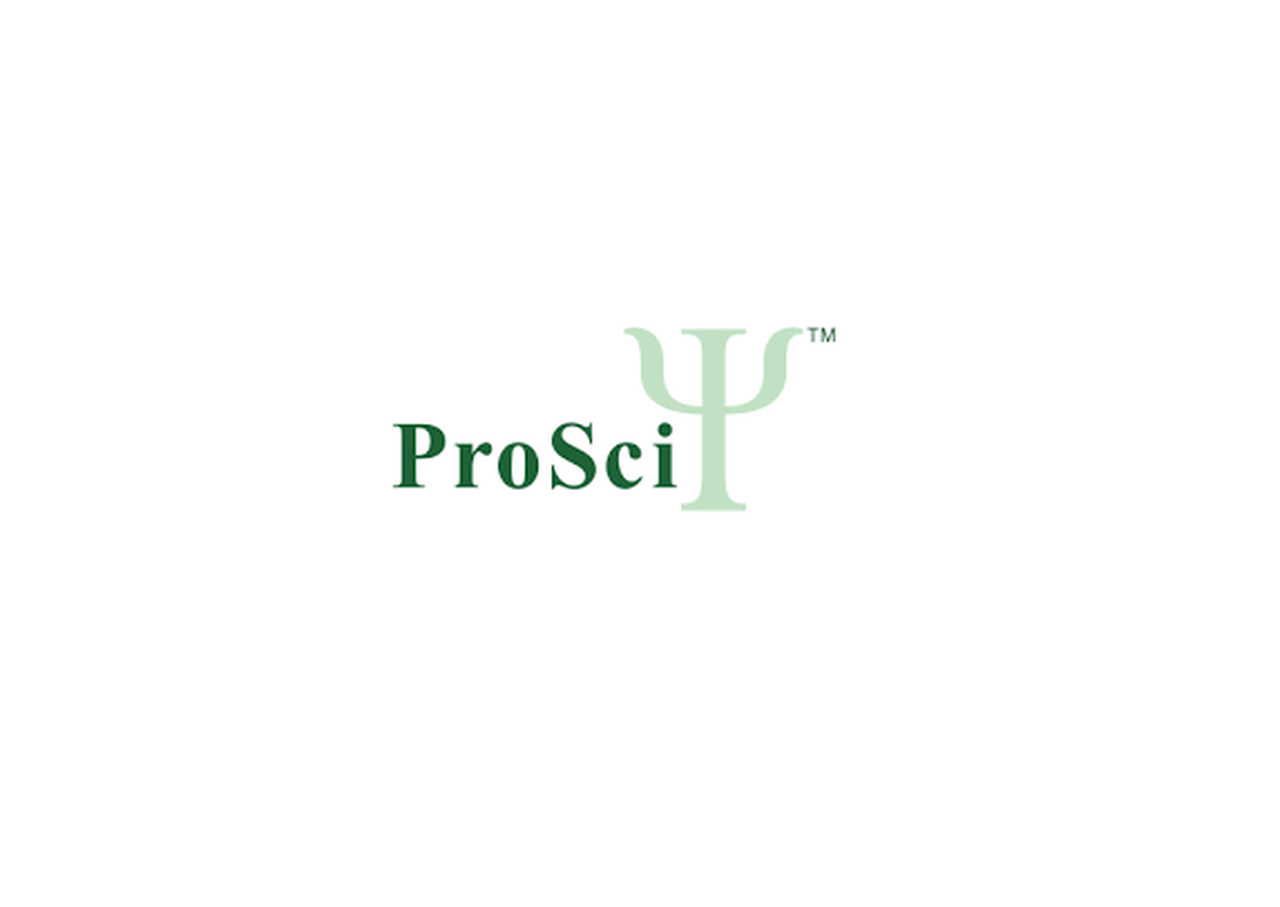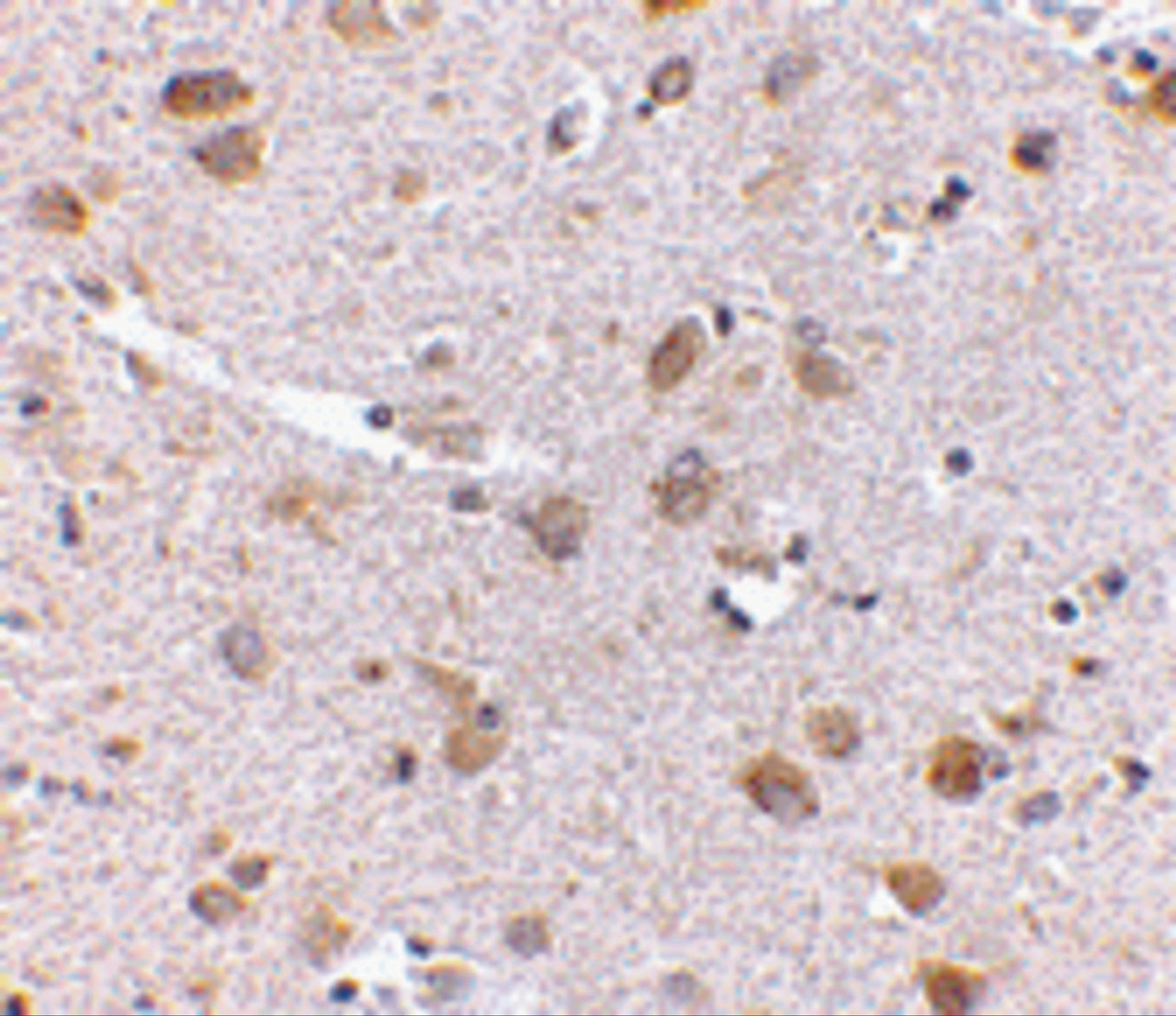Product Description
SATB1 Antibody | 4631 | ProSci
Host: Rabbit
Reactivity: Human, Mouse, Rat
Homology: N/A
Immunogen: SATB1 antibody was raised against a 15 amino acid synthetic peptide near the carboxy terminus of the human SATB1.
The immunogen is located within amino acids 620 - 670 of SATB1.
Research Area: Signal Transduction
Tested Application: E, WB, IHC-P, IF
Application: SATB1 antibody can be used for detection of SATB1 by Western blot at 2 - 4 μg/mL. Antibody can also be used for immunohistochemistry starting at 5 μg/mL. For immunofluorescence start at 20 μg/mL.
Antibody validated: Western Blot in mouse samples; Immunohistochemistry in human samples and Immunofluorescence in human samples. All other applications and species not yet tested.
Specificiy: N/A
Positive Control 1: Cat. No. 1288 - A20 Cell Lysate
Positive Control 2: Cat. No. 10-301 - Human Brain Tissue Slide
Positive Control 3: N/A
Positive Control 4: N/A
Positive Control 5: N/A
Positive Control 6: N/A
Molecular Weight: N/A
Validation: N/A
Isoform: N/A
Purification: SATB1 Antibody is affinity chromatography purified via peptide column.
Clonality: Polyclonal
Clone: N/A
Isotype: IgG
Conjugate: Unconjugated
Physical State: Liquid
Buffer: SATB1 Antibody is supplied in PBS containing 0.02% sodium azide.
Concentration: 1 mg/mL
Storage Condition: SATB1 antibody can be stored at 4˚C for three months and -20˚C, stable for up to one year. As with all antibodies care should be taken to avoid repeated freeze thaw cycles. Antibodies should not be exposed to prolonged high temperatures.
Alternate Name: SATB1 Antibody: DNA-binding protein SATB1, Special AT-rich sequence-binding protein 1
User Note: Optimal dilutions for each application to be determined by the researcher.
BACKGROUND: SATB1 Antibody: Human special AT-rich sequence-binding protein-1 (SATB1) is a nuclear matrix/scaffold-associated region DNA-binding protein, predominantly expressed in the thymus and pre-B cells. Like its homolog SATB2, SATB1 selectively binds double-stranded, special AT-rich DNA sequences in which one strand exclusively consists of well-mixed A, T, and C nucleotides. SATB1 contains a dimerization domain that shares similarity with the PDZ motif, identified as an indispensable element for high-affinity binding of SATB1 to DNA. SATB1 constitutes a functional nuclear architecture that has a 'cage-like' protein distribution surrounding heterochromatin and regulates gene expression through chromatin remodeling/HDAC (histone deacetylase complex) and transcription factors recruitment. SATB1 functions as a 'genome organizer' essential for proper T-cell development. Recent studies show that SATB1 is necessary for breast cancer cells to become metastatic, and when ectopically expressed in non-metastatic cells, can induce invasive activity in vivo. At least two isoforms of SATB1 are known to exist.
 Euro
Euro
 USD
USD
 British Pound
British Pound
 NULL
NULL












